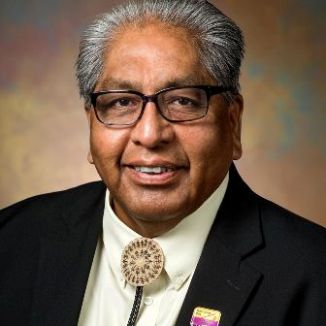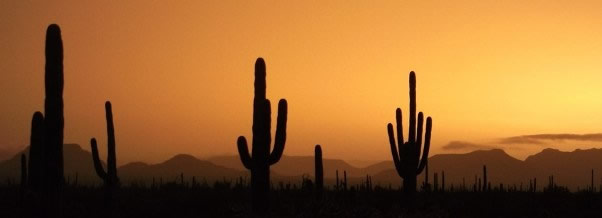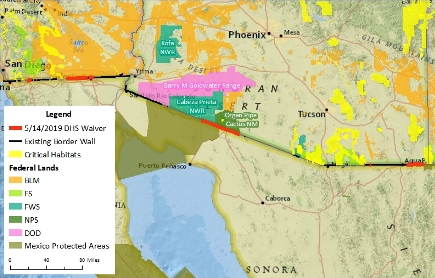Tohono O’odham claim Trump’s border wall erection violates sacred spots, rights

Tohono O'odham Nation Chair Ned Norris, Jr.
SELLS
Federal agencies have failed to hold required consultations with the Tohono O’odham Nation about destruction being caused by the building of the U.S.- Mexico border wall, Tribal Chair Ned Norris, Jr. testified Feb. 26 before the U.S. House of Representatives Subcommittee on Indigenous Peoples of the United States.
The wall builders have bulldozed or blasted religious and cultural sites of great significance to the Tohono O’odham, he said.
“Dynamiting these sacred sites and burial grounds is the same as bulldozing Arlington National Cemetery or any other cemetery,” Norris said. “Our history as a people is being obliterated and our ancestors’ remains are being desecrated.”
He pled for Congress to “act to restrict or remove the Department of Homeland Security’s dangerously broad authority to waive cultural preservation laws and compel them to consult with tribes on these issues. Preserving these sites is important not only to the O’odham, but to the history and culture of the United States,” he said.
The Tohono O’odham Nation is a federally recognized tribe with more than 34,000 enrolled tribal citizens. Its traditional lands range from what is now central and southern Arizona to the Sea of Cortez in Sonora, Mexico. The nation’s current reservation includes 62 miles of international border, and it has been on the front lines of border policy since 1854.
Border wall construction at culturally important areas such as Quitobaquito Springs and Monument Hill has destroyed sacred sites, burial grounds, and other areas of significance to the nation.
The National Parks Service has acknowledged that these areas are sacred to the O’odham. Yet the Department of Homeland Security has been allowed to ignore cultural preservation and environmental laws.
Despite the tribe’s repeated requests for meaningful consultations about impacts of the wall construction and Homeland Security promises to hold them, as legally required, no such conversations have transpired, the tribal government claims.

Saguaro cactus being killed for a border wall are an iconic species previously protected at the borderlands Organ Pipe Cactus International Biosphere Reserve, one of 325 areas worldwide intended to test and outline how humans can strike a balance among apparently conflicting issues of conserving biological diversity, promoting economic and social development, and maintaining associated cultural values. Click to enlarge. Photo: Courtesy National Park Service.
On Feb. 27, the National Congress of American Indians (NCAI) also condemned the recent activity in southeastern Arizona that led to the desecration of culturally significant sites, which includes blasting of iconic saguaro cactus protected at Organ Pipe Cactus National Monument.
The monument is a U.N. International Biosphere Reserve, one of 325 worldwide intended to test and outline how humans can strike a balance among apparently conflicting issues of conserving biological diversity, promoting economic and social development, and maintaining associated cultural values, according to the National Park Service.
“NCAI believes the Administration’s blanket waiver of cultural protection and environmental laws, which statutorily recognize the treaty and trust responsibilities the United States owes to Indian country, is permanently damaging culturally sensitive sacred sites, and serves as a threat to the respect for tribal sovereignty,” the organization said in a written statement.
The statement pinned the blame on U.S. President Donald Trump, whose Administration suspended at least 41 laws to build the wall between the United States and Mexico.
“The President’s actions and policies signal to Indian country a complete failure to sufficiently understand our American Indian and Alaska Native communities, and what it means to honor the trust responsibility owed to Indian country,” said NCAI CEO Kevin J. Allis. “The desecration of these sacred sites on tribal lands along the U.S. Southern Border is shameful and must stop immediately.”
NCAI opposes the construction of the border wall on tribal lands without the consent of the affected tribal nations and calls on the Administration to immediately cease further activity and engage directly with the Tohono O’odham Nation.
Construction of the wall adds insult to injury for the citizens of the sovereign indigenous tribe. From the early 18th Century to the present, O’odham land has been occupied by foreign governments, it says.
In 1853, through the Gadsden Purchase, or Treaty of La Mesilla, O’odham territory was divided almost in half, between the United States and Mexico.
The treaty bound the United States to honor all land rights of the area held by Mexican citizens, which included the O’odham, who were supposed to have the same constitutional rights as any other United States citizen.
However, the demand for land for settlement escalated with the development of mining and the transcontinental railroad. That demand resulted in the loss of O’odham jurisdiction in areas on both sides of the border.
What’s more, the U.S.-Mexico border has become “an artificial barrier to the freedom of the Tohono O’odham. . . to traverse their lands, impairing their ability to collect foods and materials needed to sustain their culture and to visit family members and traditional sacred sites,” its government sustains.
O’odham members must produce passports and border identification cards to enter into the United States if they are leaving the part of their land south of the border.
They say that “on countless occasions, the U.S. Border Patrol has detained and deported members of the Tohono O’odham Nation who were simply traveling through their own traditional lands, practicing migratory traditions essential to their religion, economy and culture. Similarly, on many occasions U.S. Customs have prevented Tohono O’odham from transporting raw materials and goods essential for their spirituality, economy and traditional culture. Border officials are also reported to have confiscated cultural and religious items, such as feathers of common birds, pine leaves or sweet grass.”
The division of O’odham lands “has resulted in an artificial division of O’odham society,’ they say. O’odham bands are now broken up into four federally recognized tribes: the Tohono O’odham Nation, the Gila River Indian Community, the Ak-Chin Indian Community and the Salt River (Pima Maricopa) Indian community.
Another band, the Hia-C’ed O’odham, is not federally recognized, while its members reside throughout southwestern Arizona. All of the groups still speak the O’odham language, which derives from the Uto-Aztecan language group, although each group has varying dialects.
The non-profit National Parks Conservation Association sent a strong message of support for Chair Norris’ statement with a letter to Congress the same day as his presentation. It states:
“Organ Pipe Cactus National Monument was created in 1937 to protect its namesake plant and a scenic, biologically rich portion of the Sonoran Desert. However, the park also plays an important role in protecting, preserving and interpreting archaeological sites dating back approximately 1,600 years. The recent and ongoing destruction of park lands – including traditional homelands and burial sites held sacred by the Tohono O’odham Nation – not only undermines the National Park Service’s preservation mandate under the Organic Act of 1916, it calls into question whose history matters.
“On May 7, 2019, Customs and Border Protection (CBP) announced a plan to build a 30-foot bollard wall along the majority of Organ Pipe Cactus National Monument’s 30-mile border and 15 miles of neighboring Cabeza Prieta National Wildlife Refuge, as well as a segment of the border in Coronado National Memorial, replacing primarily existing vehicular barriers.
“While CBP opened a comment period that ran until July 5, the Department of Homeland Security waived 41 environmental laws covering the project areas on May 15 and contracts were awarded on May 16. It’s clear that the comment period was just window dressing, not intended to have any significant impact on the construction plan.
“In providing an additional $1.4 billion in border wall funding and no restrictions on the use of Defense Department funds, the FY2020 appropriations bills not only allowed more projects to move forward, it effectively provided a stamp of approval for the projects at Organ Pipe, Coronado, and other public lands along the border. And now we’re seeing the consequences of that decision,” the National Parks Conservation Association lamented.
In February 2017, one month after Trump issued Executive Order 13767 to build the border wall, the Inter Tribal Association of Arizona ratified a resolution on behalf of 21 native nations opposing the construction and the associated waivers of federal and other laws protecting Indian lands.
In addition to illegally destroying cultural and religious properties, the barrier prevents wildlife migrations “essential for survival and general life, health and existence,” it says.
The project is bound to “injure endangered species such as the jaguar and other wildlife sacred to the tribes,” as well as devastating countless saguaro cactus and other culturally significant plants, the organization stated.
The Sierra Club and the Center for Biological Diversity also lodged strong objections to the wall construction, citing dire implications for migratory wildlife species.

